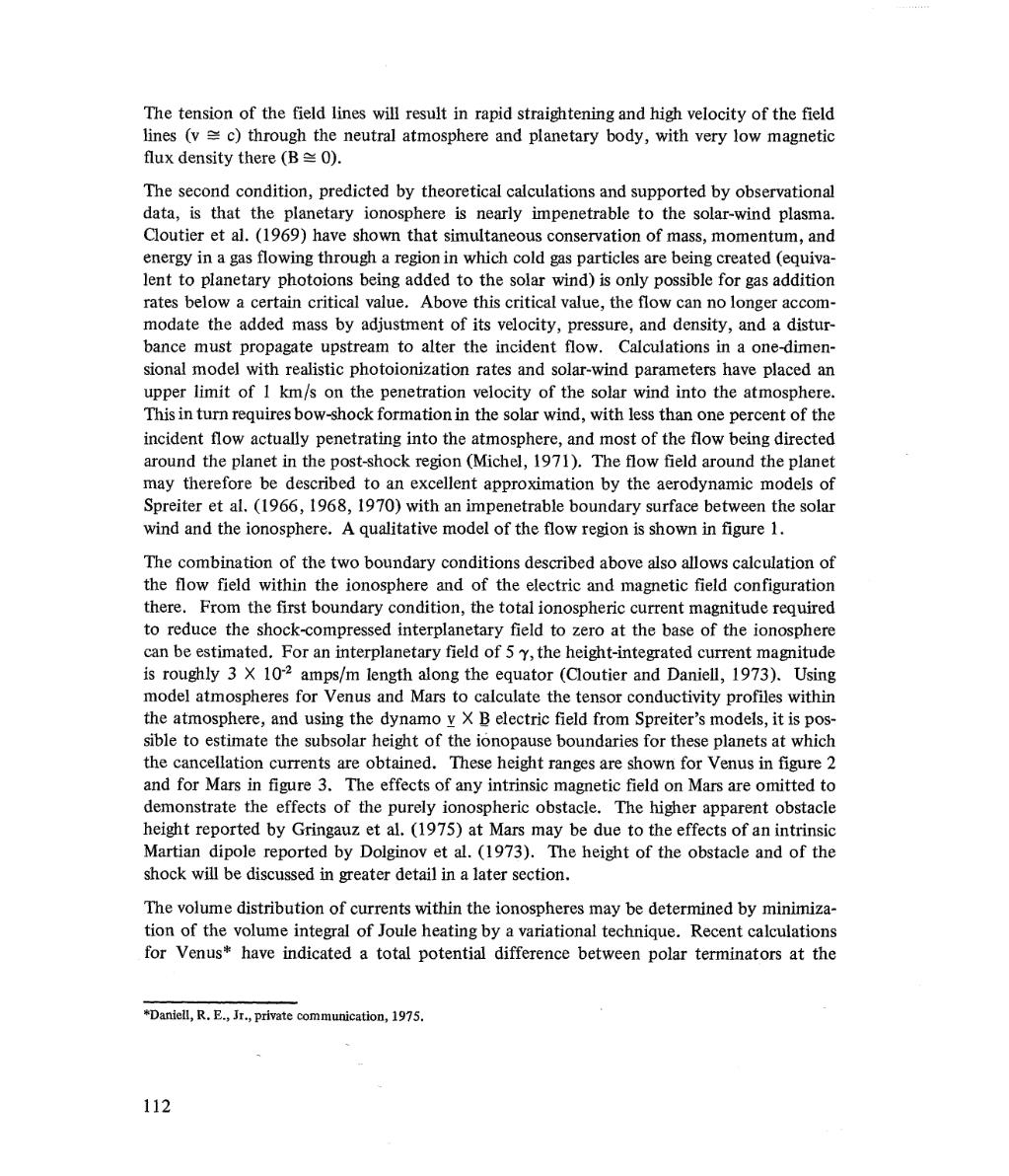The tension of the field lines will result in rapid straightening and high velocity of the field lines () through the neutral atmosphere and planetary body, with very low magnetic flux density there ().
The second condition, predicted by theoretical calculations and supported by observational data, is that the planetary ionosphere is nearly impenetrable to the solar-wind plasma. Cloutier et al. (1969) have shown that simultaneous conservation of mass, momentum, and energy in a gas flowing through a region in which cold gas particles are being created (equivalent to planetary photoions being added to the solar wind) is only possible for gas addition rates below a certain critical value. Above this critical value, the flow can no longer accommodate the added mass by adjustment of its velocity, pressure, and density, and a disturbance must propagate upstream to alter the incident flow. Calculations in a one-dimensional model with realistic photoionization rates and solar-wind parameters have placed an upper limit of 1 km/s on the penetration velocity of the solar wind into the atmosphere. This in turn requires bow-shock formation in the solar wind, with less than one percent of the incident flow actually penetrating into the atmosphere, and most of the flow being directed around the planet in the post-shock region (Michel, 1971). The flow field around the planet may therefore be described to an excellent approximation by the aerodynamic models of Spreiter et al. (1966, 1968, 1970) with an impenetrable boundary surface between the solar wind and the ionosphere. A qualitative model of the flow region is shown in figure 1.
The combination of the two boundary conditions described above also allows calculation of the flow field within the ionosphere and of the electric and magnetic field configuration there. From the first boundary condition, the total ionospheric current magnitude required to reduce the shock-compressed interplanetary field to zero at the base of the ionosphere can be estimated. For an interplanetary field of , the height-integrated current magnitude is roughly 3 × 1O-2 amps/m length along the equator (Cloutier and Daniell, 1973). Using model atmospheres for Venus and Mars to calculate the tensor conductivity profiles within the atmosphere, and using the dynamo electric field from Spreiter's models, it is possible to estimate the subsolar height of the ionopause boundaries for these planets at which the cancellation currents are obtained. These height ranges are shown for Venus in figure 2 and for Mars in figure 3. The effects of any intrinsic magnetic field on Mars are omitted to demonstrate the effects of the purely ionospheric obstacle. The higher apparent obstacle height reported by Gringauz et al. (1975) at Mars may be due to the effects of an intrinsic Martian dipole reported by Dolginov et al. (1973). The height of the obstacle and of the shock will be discussed in greater detail in a later section.
The volume distribution of currents within the ionospheres may be determined by minimization of the volume integral of Joule heating by a variational technique. Recent calculations for Venus[1] have indicated a total potential difference between polar terminators at the
- ↑ Daniell, R. E., Jr., private communication, 1975.
112





